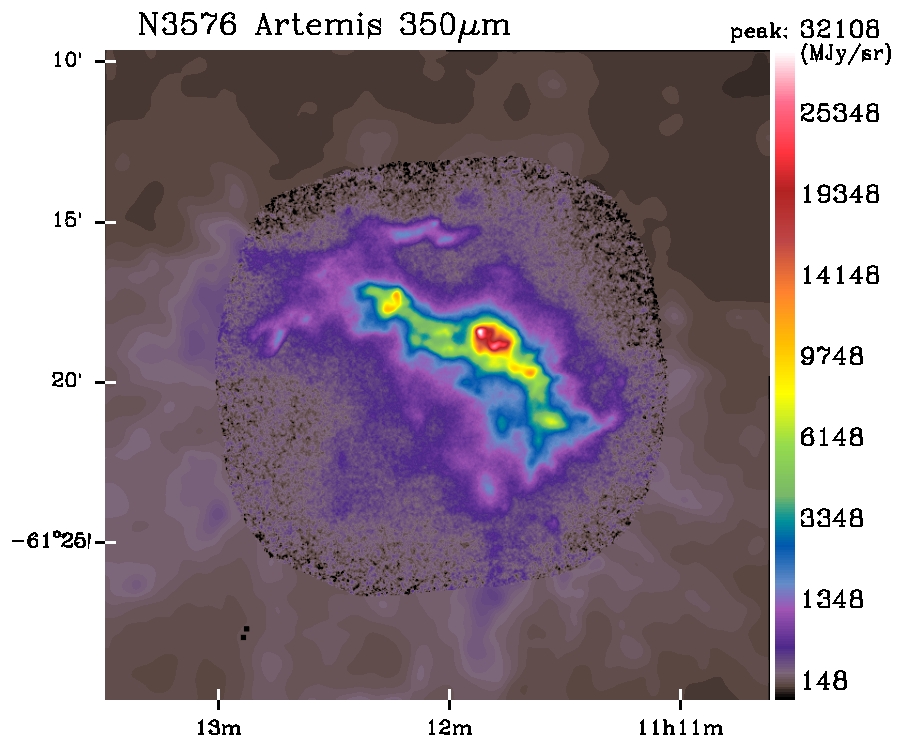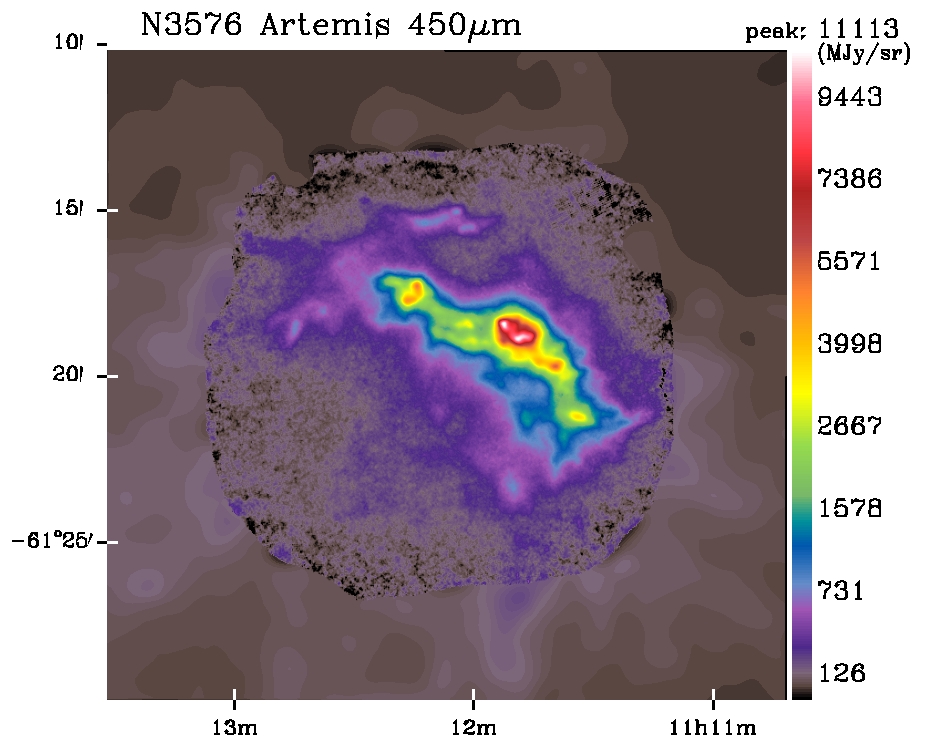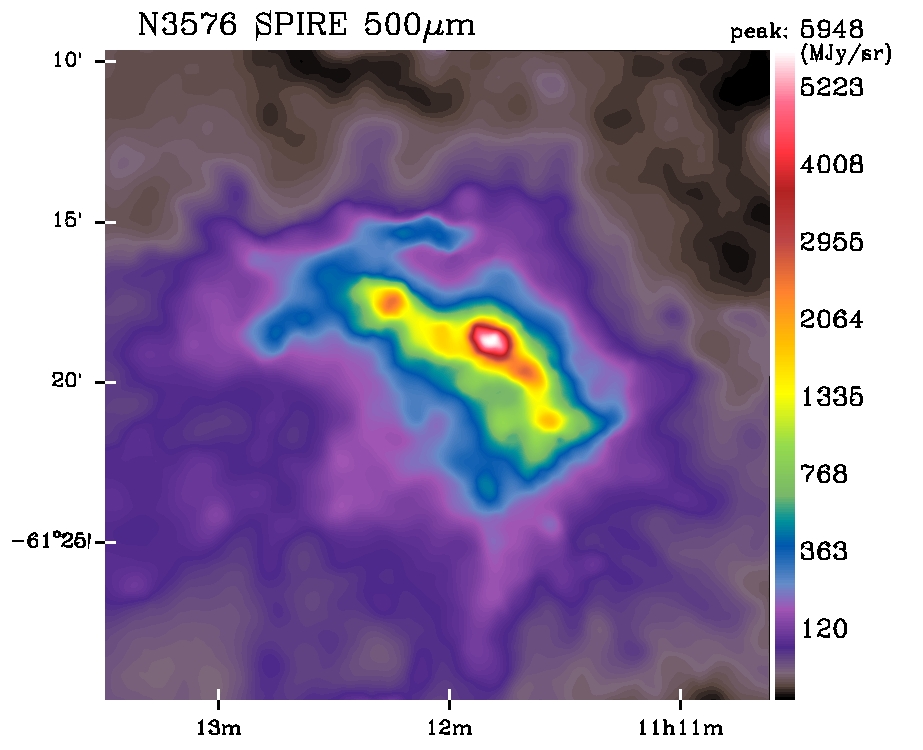


| Scanamorphos * for ArTéMiS |
 |
 |
 |
| documentation and reference
|
download and installation
|
inquiries |
acknowledgements
|
|
Scanamorphos is an IDL software developed
to build maps from scan observations made with bolometer
arrays or other instruments subject to low-frequency
noise, in particular with the PACS and SPIRE
photometers onboard the Herschel
space telescope (wavelength range of operation: 70 to 500
µm). It has now been adapted to other far-infrared and
millimeter instruments, ground-based or balloon-borne.
Here are the main functionalities for ArTéMiS:
The processing is fully
automated, but ample visualization of intermediate results
at various steps is enabled.
You will need the ArTéMiS pipeline for the calibration and opacity correction, and to reinject the processed data into the original data structures for further use. The scanam_artemis tree is available already grafted onto the pipeline, with its interface. * portmanteau word composed of "scan" and "anamorphosis" anamorphosis: reversible transformation of an image by a mathematical or optical operator (from the Greek  , implying the idea of a
transposition or return; and , implying the idea of a
transposition or return; and  : shape) : shape)documentation and reference:
download and installation:
inquiries, bug reports, suggestions for improvements or new functionalities:
acknowledgements:
|